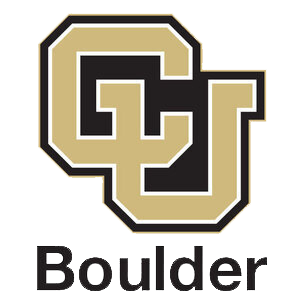Student Poster Abstracts
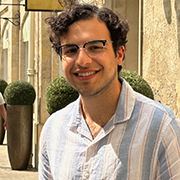 Amer Al-Hiyasat Massachusetts Institute of Technology |
Dynamics of a cold particle in a hot bathWe study the dynamics of a zero-temperature, overdamped tracer particle in a bath of Brownian particles at temperature T. At low bath densities, the tracer exhibits nonequilibrium behavior reminiscent of active particles, including wall accumulation and the emergence of ratchet currents in asymmetric potentials. As the bath density increases, these effects vanish and the tracer equilibrates to a Boltzmann distribution at temperature T. We develop an explicit model of the tracer-bath interactions that can be solved in the thermodynamic limit and determine the conditions under which this effective equilibrium picture emerges. We discuss applications to multi-temperature systems and to the dynamics of passive objects in active baths. |
|
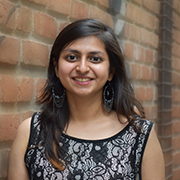 Pragya Arora Brandeis University |
Title to be announcedAbstract to come |
|
 Subhaya Bose University of California, Merced |
Analysis of elastic strains reveals shape selection pathways in active gelsMyosin motor-induced forces in the actin cytoskeleton are responsible for cell and tissue shape changes in living systems. We consider in vitro experiments where a set of actomyosin gel disks spontaneously contract and buckle into a family of initial-geometry dependent, 3D shapes ranging from domes to wrinkled [1]. We perform particle imaging velocimetry (PIV) analysis on gels of different initial shapes to obtain the in-plane distribution of elastic strains. Resolving the radial and azimuthal components of strain reveals the robust occurrence of an inner isotropic contracting region, surrounded by an outer region with radial stretching. Comparison with a model for active stresses in elastic disks allows us to infer an outer region with aligned force dipoles representing myosin activity. Our findings support the hypothesis that this differential distribution of active stresses arises from the contraction-induced local alignment of actin bundles along the gel boundary. Future work will reveal how the in-plane strain distribution determines the final 3D buckled shapes. 1. “Artificial contractile actomyosin gels recreate the curved and wrinkling shapes of cells and tissues” by G. Livne et al., biorXiv 2023.03.21.533327 |
|
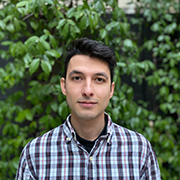 Paulo Casagrande Godolphim Universidad de Chile |
Micromechanics: quantitative modeling in fish embryo morphogenesisThe vertex model is commonly utilized for modeling confluent tissues; however, there has been limited exploration of systematic validation for the model. Previous attempts at validation have involved global parameter fits, as seen in Perez-Verdugo et al. (Interface 2021). In this context, we introduce Micromechanics as a method to rigorously test existing models and customize them based on experimental data. After the customization process, mechanical fields can be extracted from experimental images, similar to force inference techniques employed by Ishihara et al. (J. Theor. Biol 2012). Micromechanics principles entail seeking homogeneities and symmetries in the parameter space of models constrained by experimental data. The assumption is that optimal parameters accurately describing tissue evolution in experiments apply uniformly to the entire tissue and its sub-parts. If the optimal parameters demonstrate homogeneity, the model is considered a robust description; otherwise, modifications are deemed necessary. In micromechanics, we conduct independent simulations for each subset of the system, ranging from individual vertices, cells, and to the entire tissue. Boundary conditions are determined by experimental data. In each simulation, optimal parameters are sought, and correlations between them are examined. In our study, we fit a simplified version of the vertex model, incorporating only perimeter and area harmonic forces, to in vivo experimental data of the EVL cell layer during the epiboly process of an Annual Killifish embryo (time ~11 to 22hpf). Experimental vertex positions are obtained through fluorescent microscopy with a 12-minute frame rate. Our primary finding involves the construction of a new energy functional candidate for the vertex model, obtained from (and specifically tailored to) our experimental data. From this new energy functional, we calculated the time evolution of the pressures and tension fields in the tissue. Additionally, we are introducing Micromechanics as a new technique for quantitative modeling of biological tissues and for force inference, which can potentially be applied to many other models. As a secondary result, we also identify a degeneracy in the vertex model that results in an ill-defined Shape Index. |
|
 Santiago Gomez Melo Ruprecht-Karls Universitaet Heidelberg |
Title to be announcedAbstract to come. |
|
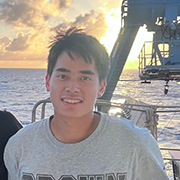 Ian Ho Stanford University |
Self-learning mechanical circuitsDynamical self-adaptivity and embodied computation are ubiquitous in living systems, from cytoplasm and biofilms to animal flocks. Despite recent progress in such material computation, the problem of designing mechanical systems which self-learn remains poorly understood. Here we introduce the concept of self-learning mechanical circuits, which use mechanical inputs from changing environments to continually update their internal state, thus representing an entirely mechanical information processing unit. Our circuits are composed of a new mechanical construct: an adaptive directed spring (ADS), which executes neural network-like computations mechanically. We demonstrate the capacity of mechanical circuits to self-learn using both theoretical modeling and experimental realizations. Our results pave the way towards the construction of energy-harvesting, adaptive materials which can autonomously and continuously sense and self-optimize to gain function in different environments. |
|
 Ayanna Matthews University of Chicago |
Trainable Materials With Internal PrestressDisordered materials are great candidates for trainable materials due to their varied and uncorrelated response to different types of deformations. We use disordered spring network models to test the trainability of disordered materials for specific mechanical functions, but thus far these models have not considered internal stress. We want to add internal prestress into our models, because most materials—including living materials with active internal stresses—have significant amounts of prestress. Using this model, I test the limits of trainability in materials with internal prestress. Results show that with increased prestress, our training method cannot just rely on how much stress or change in stress each component feels, but must also now consider how each reorients under deformation. This provides insight into how materials experiencing prestress might be trained and sets limits based on possible training protocols. |
|
 Carlos Moguel Syracuse University |
Title to be announcedAbstract to come. |
|
 Aniruddh Murali University of Southern Denmark |
Title to be announcedAbstract to come. |
|
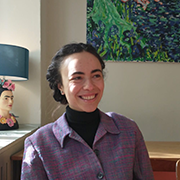 Beatrice Nettuno University of Munich |
Title to be announcedAbstract to come |
|
 Luke Neville University of Bristol |
Controlling wall particle interactions withAbstract to come. |
|
 Tammy Qiu Columbia University |
Title to be announcedAbstract to come. |
|
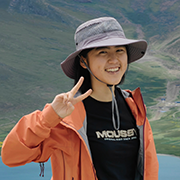 Luyi Qiu Harvard University |
Title to be announcedAbstract to come. |
|
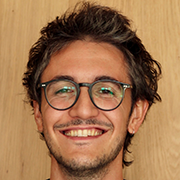 Riccardo Rossetto Max Planck Institute for Dynamics and Self-Organization |
Phase separation in a compartment with matter exchange and dimerizationIn biological cells, patterns form in compartments of various dimensionalities. For instance, proteins form structures in biological membranes, which can be conceptualized as a two-dimensional compartment that exchanges material with the bulk cytosol. Moreover, the involved proteins often also form short polymers and interact unspecifically with each other. We describe this situation with a thermodynamically consistent minimal model, which accounts for phase separation, dimerization, and material exchange between bulk and a generic compartment. While these mechanisms are understood individually, interesting nonlinear effects emerge from their combination. We illustrate this by explaining experimental data of the PAR patterning system, where dimerization boosts membrane binding, presumably to control PAR patterns. More broadly, our general model unveils fundamental mechanisms of controlling phase separation occurring in a compartment and will help us explain more biological observations in the future. |
|
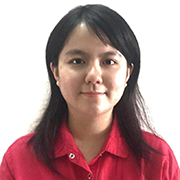 Yiwen Tang Northeastern University |
Title to be announcedAbstract to come |
|
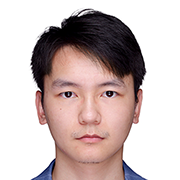 Ding Wang Hong Kong Baptist University |
Title to be announcedAbstract to come |
|
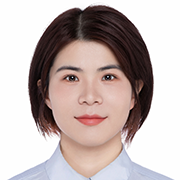 Haiqin Wang Technion-Israel Institute of Technology  |
Persistent random walk: a phenomenological paradigm for cell migration on solid substratesCell migration is crucial to many biological processes, including embryonic morphogenesis, tissue repair, immune response, and cancer progression. Understanding how cells respond to external stimuli (chemical, geometrical, and physical signals) is a major challenge for cell migration. These responses involve movement toward or away from a stimulus, which is called a taxis. We propose the persistent random walk model, in which active randomness is described by persistent random motion and the taxis is included into some “potentials”, provide a phenomenological paradigm for quantifying cellular taxis, such as haptotaxis on substrates with fibronectin gradients, curvotaxis on stiff cylinders, and durotaxis on substrates with stiffness gradients. |
|
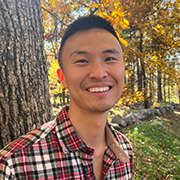 XJ Xu Yale University |
Title to be announcedAbstract to come. |
|
 Maria Yampolskaya Boston University |
An attractor network model of cell fate transitions with signal-driven bifurcationsMany animals have hundreds of types of highly specialized tissues working in concert. In development and when injured, cells undergo complex cell fate transitions to self-organize. Modelling this process often entails one of two approaches. The first approach is to model differentiation as a dynamical system traversing an abstract energy landscape, where cell types correspond to attractor basins. The second approach is to model the interactions between a small number of genes in a gene circuit model. My work combines dynamical systems theory and Hopfield networks to create a phenomenological model uniting cell fate, gene expression, and signals. In my attractor network model, the stability of attractors is controlled by signal-driven bifurcations. Using existing single-cell RNA-sequencing (scRNA-seq) mouse lung data, my model is able to directly compare theoretical landscape candidates with experimental observations. With further development, this model has the capacity to generate testable predictions of gene expression dynamics under different spatial configurations, mechanical stresses, and chemical conditions. |
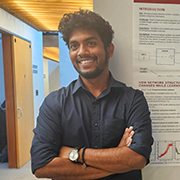 Vidyesh Rao Anisetti Syracuse University |
On physical processes that work like learning algorithmsAdaptive behavior is widespread in both living and non-living systems, manifesting in diverse ways from the directional growth of sunflowers in response to sunlight, to directed aging of materials. In our work we explain such adaptive behaviour through the lens of “learning” —as exemplified in neural networks. We show that there exists simple physical processes in nature that could work like learning algorithms. |
|
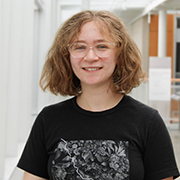 Anna Barth Cornell University |
Universal scaling of shear thickening suspensions under acoustic perturbationNearly all dense suspensions undergo dramatic and abrupt thickening transitions in their flow behavior when sheared at high stresses. Such transitions occur when suspended particles come into frictional contact with each other to form structures that resist the flow. These frictional contacts can be disrupted with acoustic perturbations, thereby lowering the suspension’s viscosity. Acoustic perturbations offer a convenient way to control the suspension’s shear thickening behavior in real time, as the suspension responds to the perturbation nearly instantaneously. Here, we fold these acoustic perturbations into a universal scaling framework for shear thickening, in which the viscosity is described by a crossover scaling function from the frictionless jamming point to a frictional shear jamming critical point. We test this theory on sheared suspensions with acoustic perturbations and find experimentally that the data for all shear stresses, volume fractions, and acoustic powers can be collapsed onto a single universal curve. Within this framework, a scaling parameter that is a function of stress, volume fraction and acoustic power determines the proximity of the system to the frictional shear jamming critical point and ultimately the viscosity. Our results demonstrate the broad applicability of the scaling framework, its utility for experimentally manipulating the system, and open the door to importing the vast theoretical machinery developed to understand equilibrium critical phenomena to elucidate fundamental physical aspects of the non-equilibrium shear thickening transition. |
|
 Quirine Braat Eindhoven University of Technology |
Title to be announcedAbstract to come. |
|
 Tejas Dethe Princeton University |
Title to be announcedAbstract to come. |
|
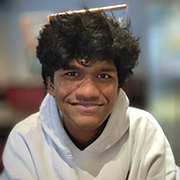 Uday Ram Gubbala Institute of Science and Technology Austria |
Title to be announcedAbstract to come |
|
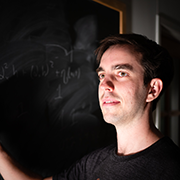 Jacob Hass University of Oregon |
Title to be announcedAbstract to come. |
|
 Joey McTiernan University of California, Merced |
The Assembly and Budding of SARS-CoV-2Upon the accumulation of viral structural proteins along the ER-Golgi intermediate compartment (ERGIC), SARS-CoV-2 assembles and buds off, driven by the interactions between these proteins, RNA and the ERGIC membrane. The membrane or M protein is thought to recruit other structural proteins, leading to the formation of protein aggregates and the subsequent induction of membrane curvature, prompting the onset of virion formation. However, the direct impact M protein has on the membrane and how this leads to assembly is unclear. Here, we combine all atom molecular dynamics (MD) simulations of an individual M protein with a mesoscopic continuum model describing the coupled evolution of membrane shape and M protein density to quantify viral assembly and budding. From our MD simulations, we identify the M protein’s ability to thin the membrane and induce curvature dependent on its conformation. By incorporating these properties into our continuum model and then comparing with atomic force microscopy measurements of protein aggregate formation, we estimate the membrane mediated M-M protein interaction and make predictions for the onset of assembly and budding under physiological conditions. This work provides a better understanding of how the interactions and dynamics of M protein lead to viral assembly and budding, supplying insights into alternative methods for preventing viral replication and implications for other enveloped viruses. |
|
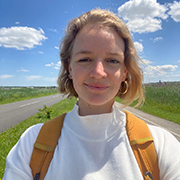 Billie Meadowcroft University College London |
Title to be announcedAbstract to come. |
|
 Raghavendra Nimiwal Columbia University |
Title to be announcedAbstract to come. |
|
 Toshi Parmar University of California, Santa Barbara |
Title to be announcedAbstract to come. |
|
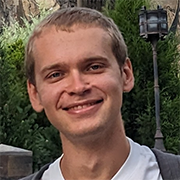 Yury Polyachenko Princeton University  |
Towards DNA transcription targetingIn order to perform useful biological functions, phase-separated biomolecular condensates comprising proteins and RNAs must assemble at specific locations within a living cell. However, the biophysical mechanisms by which such spatial control is achieved remain poorly understood. To address this question, we present an experimentally motivated coarse-grained model of a class of transcriptional condensates that are believed to play a role in initiating DNA transcription. Specifically, we consider transcriptional condensates composed of the bromodomain protein BRD4, which selectively associates with chromatin via specific interactions with acetylated histone tails. Through a combination of equilibrium and nonequilibrium molecular dynamics simulations, we elucidate how BRD4–chromatin interactions tune both the partitioning of chromatin into BRD4 condensates and the nucleation pathway by which BRD4 condensates assemble. We show that both the patterning of histone acetylation marks and the oligomerization state of BRD4 molecules govern the sensitivity and specificity of chromatin-seeded heterogeneous nucleation, whereas disruption of BRD4–chromatin interactions suppresses the chromatin-associated nucleation pathway. Our findings provide a molecularly detailed view of the biophysical mechanisms governing BRD4 condensate formation and suggest potential strategies for regulating transcription via spatiotemporal control of transcriptional condensate nucleation. |
|
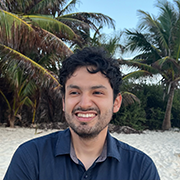 Jairo M. Rojas University of Illinois, Urbana-Champaign |
Title to be announcedAbstract to come. |
|
 Sreeja Sasidharan Lehigh University 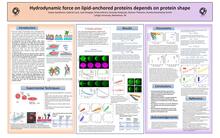 |
Hydrodynamic force on lipid-anchored proteins depends on protein shapeFlow in the surrounding fluid can transport lipid-anchored proteins laterally across lipid membranes. This transport can separate proteins according to their folded size and shape, since larger proteins experience higher force from shear flow. Here we present microfluidics-based measurements of protein transport across supported lipid bilayers. Our experiments use fluorescence microscopy to detect femtonewton-scale forces on the aqueous part of the protein with sufficient precision to distinguish between proteins with similar molecular weights but different shapes. |
|
 Luca Scharrer University of Chicago |
Nonequilibrium Pattern Formation in FlockingFlocking systems as describable by the Toner-Tu equations display two homogeneous steady-states: disordered and ordered (flocking). In a finite 1-D system below a critical size, one of these two phases is always linearly stable; as the system size is increased above some critical length, both phases become unstable to the formation of system-spanning density- and magnetization-waves. Inspired by recent works showing that coupled fields with nonreciprocal interactions can display novel spatiotemporally dynamic phases, we attempt to understand the formation of these flocking band patterns in this context by focusing on the nonreciprocal coupling present between the density and magnetization fields. |
|
 Rushikesh Shinde Université Paris Cité 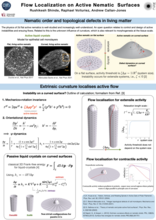 |
Flow localisation on Active Nematic SurfacesDuring morphogenetic processes, active flows occur in the plane of curved tissues. Tissues often exhibit orientational order, and topological defects arise during tissue development. We have studied the behavior of a +1 defect in a film of active ordered fluid on a curved axi-symmetric surface. We find strikingly different physics compared with the flat-space variant of the problem. We focus in particular on the influence of extrinsic curvature in the elastic free energy, usually neglected in theories of ordered fluids on curved surfaces. We consider two biologically-relevant surfaces: a capped-tube-like rigid surface, similar to epithelial tubes; and a bump on an otherwise flat plane. In the first case, we find that the activity threshold for instability becomes independent of system size, and spontaneous rotational flows become localized. In the latter case, we find that an aster can be passively unstable towards a spiral state, and as a result, contractility-driven active flows are threshold-less and localized. High contractility extinguishes the flow and restores the aster. Surprisingly, for high enough saddle curvature, the spiral to aster transition shifts from continuous to discontinuous. Our study demonstrates how the influence of an external polar-ordering field can induce local spontaneous flows, offering novel approaches to controlling the behavior of active flows. |
|
 Dor Shohat Tel Aviv University |
Crumpled thin sheets – a tabletop journey through nonequilibrium glassy dynamicsUnderstanding the unusual but seemingly universal dynamics of disordered systems trapped far from equilibrium remains a major challenge in condensed matter physics. Yet, they are not very hard to observe. Take, for example, a thin plastic sheet and crumple it into a ball. It might not be immediately evident, but this seemingly mundane object exhibits many of the hallmark behaviors shared by complex non-equilibrium and disordered systems. These include slow relaxations and creep, intermittent mechanical responses, emission of broadly distributed crackling noise and a range of memory effects. The macroscopic tabletop nature of crumpled sheets allows us to measure and correlate observables at all scales – from changes in the local structure to global mechanical response. We find that the effective degrees are freedom are localized, bistable elements, similarly to many amorphous solids. We then leverage unique experimental accessibility to build to bottom-up understanding of complex macroscopic phenomena. Under cyclic strain, the bistable elements to emergent memory effects and a programmable stiffness. Under constant loading, their slow yet correlated activation gives rise to logarithmic creep and a beautiful example of Self-Organized Criticality. We identify the minimal underlying principles for these phenomena such that our insights can be exported to disordered systems on all scales, from supercooled liquids to earthquake dynamics. |
|
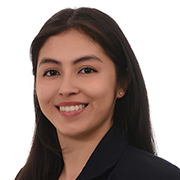 Sasiri Juliana Vargas Urbano University of Delaware |
Homeocurvature adaptation of phospholipids underlies pressure-specialization of deep-sea invertebratesThe deep ocean is dark, cold, and pressurized — pressure increases by 1 bar for every 10 m depth. How does marine life adapt to this extreme environment? Given that lipid membranes are sensitive to both temperature and pressure (they are the most compressible biological material in a cell), one expects to find adaptations in the lipidomes of organisms that are specialized for life at high pressure. Here, we explore this question using the ctenophores as a model organism. Ctenophores make up a marine invertebrate phylum that is the oldest distinct lineage on the metazoan tree, and different species have adapted independently to many pressure and temperature regimes. Building on years of work by the Haddock lab collecting different ctenophore species from different marine environments, and on recent work by the Budin lab obtaining ctenophore lipidomes, we use MD simulations to study how ctenophore lipidomes adapt to maintain critical material properties within a narrow range. We find that depth strongly predicts plasmalogen abundance, with deep-adapted ctenophore lipidomes containing as much as 73 mol % phosphatidylethanolamine plasmalogen. Our simulations and analysis suggest that plasmalogen maintains membrane deformability at high pressure so that vital cellular functions (eg, endo- and exocytosis) can still be performed under deep-sea conditions. These results imply that in addition to other more widely appreciated membrane properties (such as fluidity), lipid intrinsic curvature is also subject to natural selection in the deep sea. |
|
 Kaarthik Varma Cornell University |
Title to be announcedAbstract to come. |
|
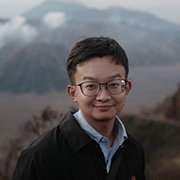 Xiuyang Xia Ludwig-Maximilians-Universität München |
Superselectivity comes from linker-mediated multivalencyAbstract to come |
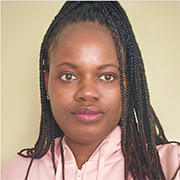 Somiealo Azote epse Hassikpezi Syracuse University |
Predicting the biomechanical drivers of cell delamination in stratified epithelia using a dynamic 3D VertexStratified epithelial tissues, such as skin and gut, comprise major organs in humans and perform multiple functions, including serving as a barrier to mechanical insults and pathogens. They are constantly self-renewing: balancing stem cell proliferation in the basal layer with a tightly controlled differentiation program in which cells move upward while undergoing stepwise transcriptional and cell shape changes to form the distinct suprabasal layers. Understanding how mechanosensitive mechanisms at the scale of molecules couple to the collective mechanical behavior of the self-renewing tissue, allowing cells to move upward across the sharp basal- suprabasal boundary to regulate stratified tissue homeostasis, is thus essential. Although some delamination events are coupled to cell division, we first focus on the simpler case where delamination occurs in the absence of cell division, and develop a biomechanical model to investigate several experimentally driven hypotheses for what drives delamination those cases: i) changes in the adhesion of basal cells to extra cellular matrix in the basement membrane, ii) local fluidization of surrounding tissue due to fluctuations or nearby cell divisions, or iii) cell autonomous changes to cell-cell adhesion and cortical tension. We investigate these hypotheses using computational simulations of a novel dynamic 3D Vertex model of stratified epithelia, recently developed in our group. Experimental data from the developing mammalian epithelium in the Niessen and Wickström labs have identified specific changes to the transcriptome of cells committed to delamination. Many of these changes are associated with cell-cell and cell-substrate adhesion pathways. We incorporate them in the computational models as changes to the model parameters describing heterotypic and homotypic cell-cell interfacial tensions and adhesion to a fiber network substrate. We make quantitative predictions for cell shapes, delamination probabilities, and delamination speeds that we compare directly to experiments, in both control and perturbed systems, in order to determine how different mechanisms are driving delamination. Future work will focus on understanding delamination coupled with cell division. |
|
 Agnish Kumar Behera University of Chicago |
Correspondence between Hebbian Unlearning and Non-equilibrium steady statesIn a previous work (arXiv:2203.03024), we demonstrate that an associative memory system with active dynamics can improve the system’s information storage and retrieval properties. Here, we propose an equivalence between the Hebbian Unlearning algorithm (also known as “dreaming”) and modifying dynamics by driving the spins with exponentially correlated noise. We demonstrate that this is similar to how neurons integrate information and fire. Our method shows how neurons can store new memories through different dynamics, without altering existing connections. |
|
 Saraswat Bhattacharyya University of Oxford |
Phase Separation driven by Active FlowsWe study the hydrodynamics of an active nematic fluid mixed with another passive or active fluid. We model this by extending the continuum theories of active nemato-hydrodynamics to a two-fluid mixture with separate velocity fields for each fluid component, coupled through a viscous drag. We observe phase separation, and argue that this results from an interplay between active anchoring and active flows driven by concentration gradients. The results are an example of liquid-liquid phase separation out of equilibrium, and may be relevant to cell sorting. |
|
 Lara Braverman Harvard University |
Crystallography and Geodesics on ConesIn my poster I am exploring the role of curvature on the formation and ground state of crystals. Specifically, I am interested in conical geometries as conical shapes are widely present in nature and pose an interesting geometric problem due to being a delta function of curvature. In my work, I explore geometric properties of cones and look at the interactions between topological defects on the surface of cones of varying commensurate angles. Using simulations, I also explore the effect of crystal seed location on the resultant crystal formation. |
|
 Aravind Chandrasekaran University of California, San Diego 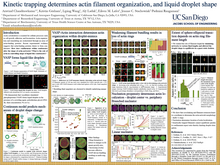 |
Kinetic trapping determines actin filament organization, thereby controlling the shape of liquid dropletsBiomolecular condensates are known to act as concentrators of essential proteins resulting in amplification of cellular signaling. The role of condensates in controlling the dynamics of cytoskeleton is not fully understood. Recent evidence suggests Vasodilator stimulated phosphoprotein (VASP) forms liquid droplets and can nucleate, polymerize, and bundle actin filaments to enclose shell and ring-shaped actin networks (Graham et al., Nature Physics, 19, 574–585 (2023)). To understand the mechanism of formation, we used CytoSim, an agent-based actin network simulator and studied the role of VASP-actin interactions under hard wall boundary conditions (https://doi.org/10.1101/2023.05.26.542517). Our simulations reveal that (un)binding kinetics determine the probability of shell vs. ring formation consistent with kinetically trapped structures. We also show that reduction of Actin-VASP residence time would favor shell formation and also establish it with experimental studies. Additionally, we show that rings are only formed under a small subset of conditions studied that provide effective bundling and form at a higher probability under slower filament elongation rates. To highlight the role of nucleation, we study the competition between Arp2/3 and VASP to show that Arp2/3 inhibits ring formation through nucleation of actin filaments (https://doi.org/10.1101/2023.06.23.546267). Experimental evidence also suggests that spherical liquid droplets deform to form ellipsoidal droplets explained by the balance between actin bending and droplet surface energies. We study the reorganization within our simulated droplets containing actin rings and show that filament length plays a critical role in determining whether the ring would eventually become a linear bundle (sphere-to-rod) or if they would remain kinetically trapped in a ring-like structure (sphere-to-ellipsoid). Our findings are relevant to the understanding of the kinetic and mechanical principles that guide the organization of filamentous actin networks within phase-separated liquid droplets. |
|
 Yuzhu Chen University of California, San Diego |
Interplay Between Mechanosensitive Adhesions and Membrane Tension Regulates Cell MotilityThe initiation of directional cell motion requires symmetry breaking that can happen with or without external stimuli. During cell crawling, forces generated by the cytoskeleton and their transmission through mechanosensitive adhesions to the extracellular substrate play a crucial role. In a recently proposed one-dimensional model [P. Sens, Proc. Natl. Acad. Sci. USA 117, 24670 (2020)], a mechanical feedback loop between force-sensitive adhesions and cell tension was shown to be sufficient to explain spontaneous symmetry breaking and multiple motility patterns through stick-slip dynamics, without the need to account for signaling networks or active polar gels. We extend this model to two dimensions to study the interplay between cell shape and mechanics during crawling. Through a local force balance along a deformable boundary, we show that the membrane tension coupled with shape change can regulate the spatiotemporal evolution of the stochastic binding of mechanosensitive adhesions. Linear stability analysis identifies the unstable parameter regimes where spontaneous symmetry breaking can take place. Using simulations to solve the fully coupled nonlinear system of equations, we show that, starting from a randomly perturbed circular shape, this instability can lead to keratocyte-like shapes. Simulations predict that different adhesion kinetics and membrane tension can result in different cell motility modes including gliding, zigzag, rotating, and sometimes chaotic movements. Thus, using a minimal model of cell motility, we identify that the interplay between adhesions and tension can select emergent motility modes. |
|
 Tanumoy Dhar University of California, San Diego |
Title to be announcedAbstract to come. |
|
 Daniel Evans University of California, Berkeley |
Mechanical Insights into Multicomponent Coexistence: A General Theory for Nonequilibrium SystemsNonequilibrium multicomponent systems, such as non-reciprocally interacting systems and mixtures of active and passive particles, routinely experience phase coexistence. In equilibrium, thermodynamics provides a framework to determine the phase diagram of these systems solely from measurable, bulk equations of state. Out of equilibrium, however, it is unclear if phase diagrams can always be constructed solely from bulk equations of state. Here, we leverage balance laws to develop a theory of multicomponent coexistence that is purely mechanical, finding a framework akin to thermodynamics under certain conditions. We find general bulk criteria for coexistence and demonstrate when an effective equilibrium form is admitted. Lastly, we numerically validate our theory on common models of nonequilibrium multicomponent field dynamics. |
|
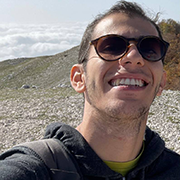 Carlo Giorgetti University of Rome, La Sapienza |
Title to be announcedAbstract forthcoming |
|
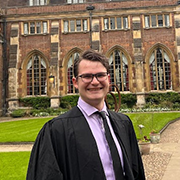 Joel Hochstetter University of Cambridge |
Mechanochemical feedback model for squamous tissue maintanenceThroughout adult life epithelial tissues are constantly turned over, demanding a delicate between cell loss and replenishment through division and differentiation of stem cells. Using a 2D Voronoi model with division and death, we propose a potential feedback mechanisms for squamous tissue maintenance based competition for biochemical fate determinants, which can robustly converge to a homeostatic steady state from different initial conditions and enables control of the fractions of different cell-types. We study the key phenomenology in terms of clonal dynamics, patterning and phase behaviour at homeostasis. In non-homeostatic conditions, such as mutant clone competition and recovery to homeostasis, we identify distinct predictions between this model and local mechanical feedback models. Through applying our model to in vivo long-term time-lapse experiments, we find a stem/progenitor hierarchy with specific temporal correlations of cell fate are needed to explain the fate behaviour of mouse skin homeostasis. As of yet our results cannot distinguish our chemical feedback mechanism from a local mechanical feedback. However, integrating spatiotemporal data from mutant and regeneration experiments may pave the way forward. |
|
 Samantha Lish Oxford University/Max Planck Institute for Dynamics and Self-Organization |
The Non-Equilibrium Statistical EmbryoHow do collectively organized multi-cellular life forms emerge from the exchange of individual mechanical and morphogenetic cues? Deciphering multiscale population dynamics poses a fundamental challenge to understanding the mechanism whereby embryonic growth is coordinated on larger scales. Coupling high-resolution optical imaging with non-equilibrium statistical analysis provides phenomenological insight into the role of mechanics and shape on macroscopic ordering during embryogenesis. Establishment and maintenance of asymmetric pre-patterning in the C. elegans embryo is an ideal subject for statistical exploration of self-assembly, however a physical theory of development from germ layer specification through morphogenesis is lacking. Analyzing stochastic trajectories according to cell fate distinctions and generation dependent control was found to be a robust statistical strategy for defining transition points at which collective space-time morphological patterns emerge. Significantly, oscillations in anomalous diffusion during gastrulation suggest that periods of relaxation accompany waves of collective motion and an increase in super diffusive behavior from differentiated cells suggests that non-equilibrium activity shifts from being driven by proliferation to directed motion. Our data-driven theoretical approach identifies self-organization principles governing proliferation in confinement and yields a new perspective about the embryo as active matter. |
|
 Xiao Ma University of Cambridge |
Hyperuniformity at the Absorbing State TransitionHyperuniform systems, whereby the static structure factor (or density correlator) obeys S(q)~q^h with h > 0, emerges at criticality in systems having multiple absorbing states, such as periodically sheared suspensions. These lie in the conserved directed percolation (C-DP) universality class, for which analytic results for h are lacking. Here, using Doi-Peliti field theory for interacting particle systems and performing perturbative renormalization group about a Gaussian model, we find h=0+ and h=2ε/9+O(ε^2) in dimension d > 4 and d = 4−ε respectively. We show how hyperuniformity emerges from anticorrelation of strongly fluctuating active and passive densities, and highlight the significance of an ‘irrelevant’ conserved noise. |
|
 Jessica Metzger MIT 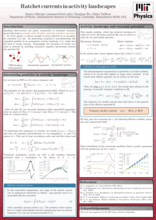 |
Exceptions to the ratchet theorem and their marginal stabilityBreaking time-reversal and left-right symmetries in stochastic dynamics generically leads to steady-state density currents (ratchet currents) – a principle known as the “Ratchet Theorem.” In active matter, a typical example is active particles in an asymmetric potential. An interesting exception is non-interacting self-propelled particles in an asymmetric activity landscape, which does not lead to steady currents. Surprisingly, the ratchet current is restored by including interactions between the particles. We show this exception to the ratchet theorem (among others) possesses a hidden time-reversal symmetry, which is marginally stable. We explain the interaction-induced ratchet current through a mean-field picture. |
|
 Amir Shee Northwestern University  |
Emerging States in Dense Systems of Chiral Active ParticlesAcross scales, from molecules to tissues, dense biological systems can exhibit collective dynamics driven by activity and elastic interactions, including flocking transitions and long-range spatiotemporal order. In this work, we consider densely packed systems of active Brownian particles with intrinsic individual chirality from a theoretical perspective, showing that these can lead to the emergence of a variety of states, including collective rotating mesoscopic order. Using dual analytical approaches—one based on normal modes and the other on continuum elasticity—this study provides a comprehensive understanding of the states that can be observed in the systems, matching very well our numerical simulations. Our findings suggest that the collective rotating states that we identify may generically appear in natural and artificial dense chiral active systems. |
|
 Christian Vanhille Campos Institute of Science and Technology Austria |
Title to be announcedAbstract to come. |
|
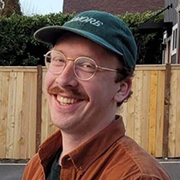 Kent Wilson University of Washington  |
Sterol-lipids enable large-scale, liquid-liquid phase separation in membranes of only two componentsA wide diversity of membranes, from those with hundreds of lipids (as in vacuoles of living yeast cells) to as few as three (as in artificial vesicles) phase separate into micron-scale liquid domains. This limit of three components is perplexing from a theoretical standpoint: only two components should be necessary. It is equally perplexing from an experimental standpoint: only two lipid types are required to form large-scale liquid domains in lipid monolayers. This incongruity inspired us to search for single, joined “sterol-lipid” molecules that replace both a sterol and a phospholipid in membranes undergoing liquid-liquid phase separation. By using sterol-lipids with long, saturated chains, we sought to mimic known preferential interactions between cholesterol and lipids with high melting temperatures. We find that membranes with only two components (one of which is a sterol-lipid) do indeed phase-separate into micron-scale liquid domains. This result mitigates experimental challenges in determining tie-lines and in maintaining constant chemical potentials of lipids as lipid ratios are changed. For one of the binary membranes, we construct a miscibility phase diagram to show how the membrane’s phase separation depends on temperature and the ratio of the lipids. |
|
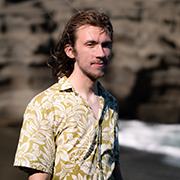 Aaron Winn University of Pennsylvania |
Oscillatory Flow Networks with ValvesZero Reynolds number Newtonian fluids exhibit perfect time-reversal symmetry even when flowing through highly asymmetric static geometries. However, flexible structures coupled to fluid forces can act as valves and promote preferential flow in one direction. Inspired by the lymphatic system, we study the flow response of a system driven by peristalsis through channels containing valves. Taken together, peristalsis with valves can act like a pump to drive fluid against adverse pressure gradients. When the valve asymmetry is small, the flow response can be decoupled into a purely peristalsis term and a term describing the rectification of oscillations by valves. When the valve asymmetry is large, flow is prevented in the reverse direction, so even at large amplitudes, retrograde peristalsis cannot drive flow against the valve direction. In this regime, the flow is independent of the direction of peristaltic waves and grows proportional to the amplitude of peristalsis. This observation has been confirmed experimentally and quantified using a non-reciprocity metric analogous to that in mechanical meta-materials. This effect becomes even more apparent in networks with branches and loops where it is argued that valves should be placed in such a way as to prevent percolating clusters containing no valves. |
|
 Qian-Ze Zhu Harvard University |
Proofreading mechanism for colloidal self-assemblyDesigning components that can robustly self-assemble into structures with biological complexity is a grand challenge for material science. Proofreading and error correction is required to improve assembly yield beyond equilibrium limits, using energy to avoid kinetic traps in the energy landscape. Here we introduce an explicit two staged proofreading scheme for patchy particle colloidal assemblies that substantially improves assembly yield and robustness. The first stage implements local rules whereby particles increase their binding strengths when they detect a local environment corresponding to a desired target. The second stage corrects remaining errors, adding a reverse pathway inspired by kinetic proofreading. The scheme shows significant yield improvements, eliminating kinetic traps, giving a much broader temperature range with high yield. Additionally, the scheme is robust against quenched disorder in the components. Our findings illuminate a pathway for advancing programmable design of synthetic living materials, potentially fostering the synthesis of novel biological materials and functional behaviors. |
